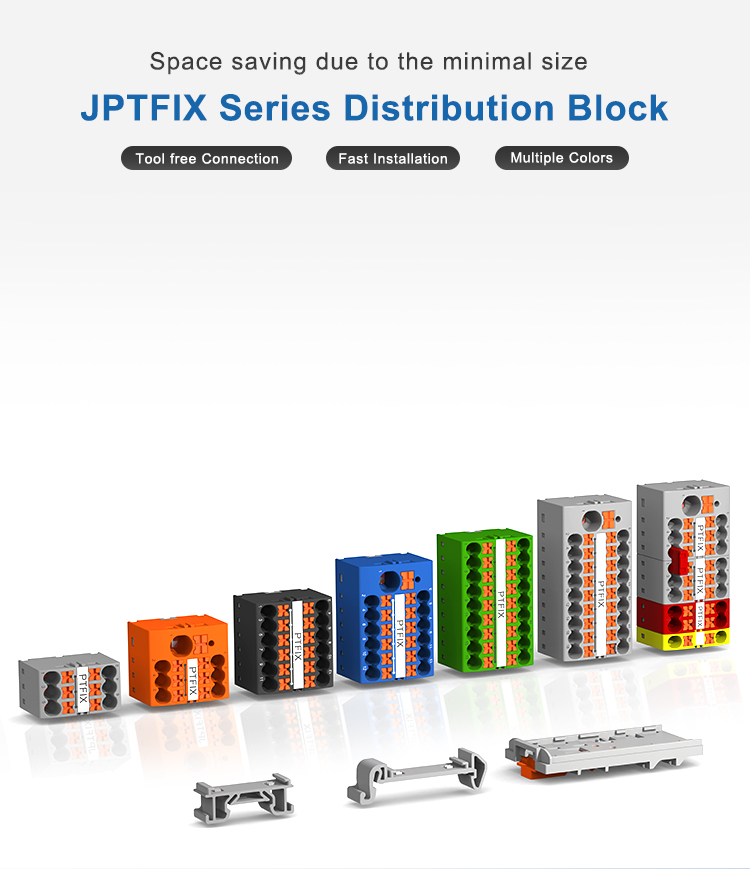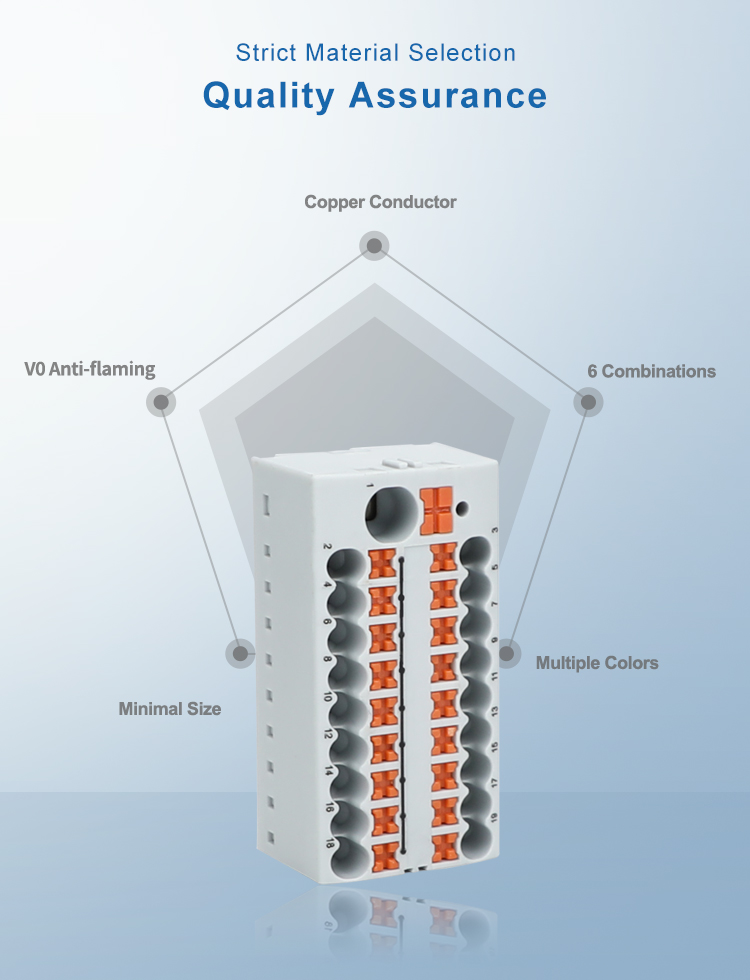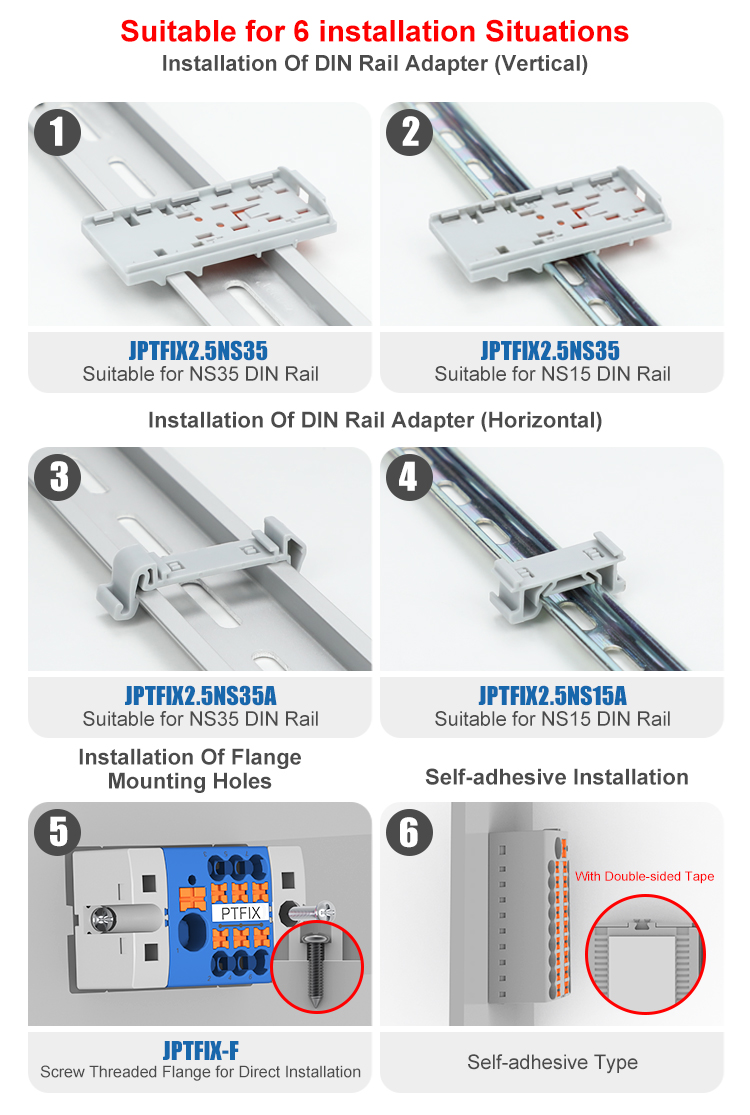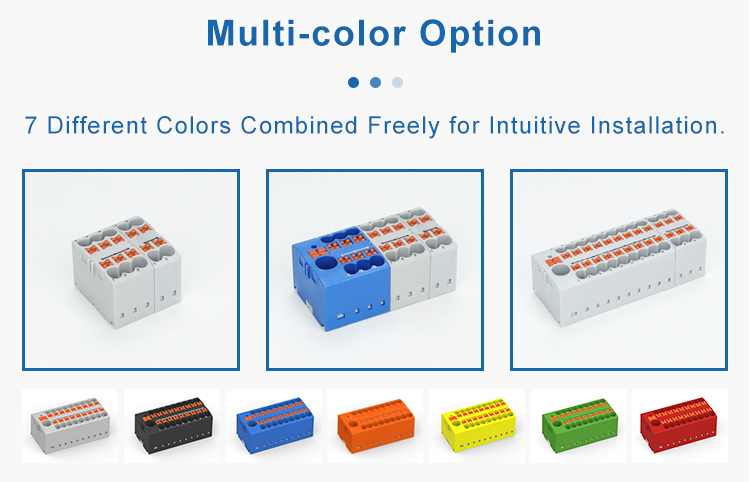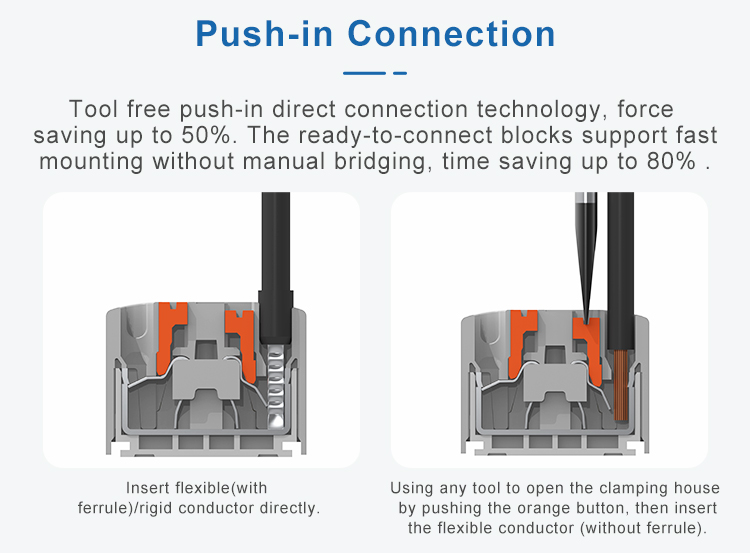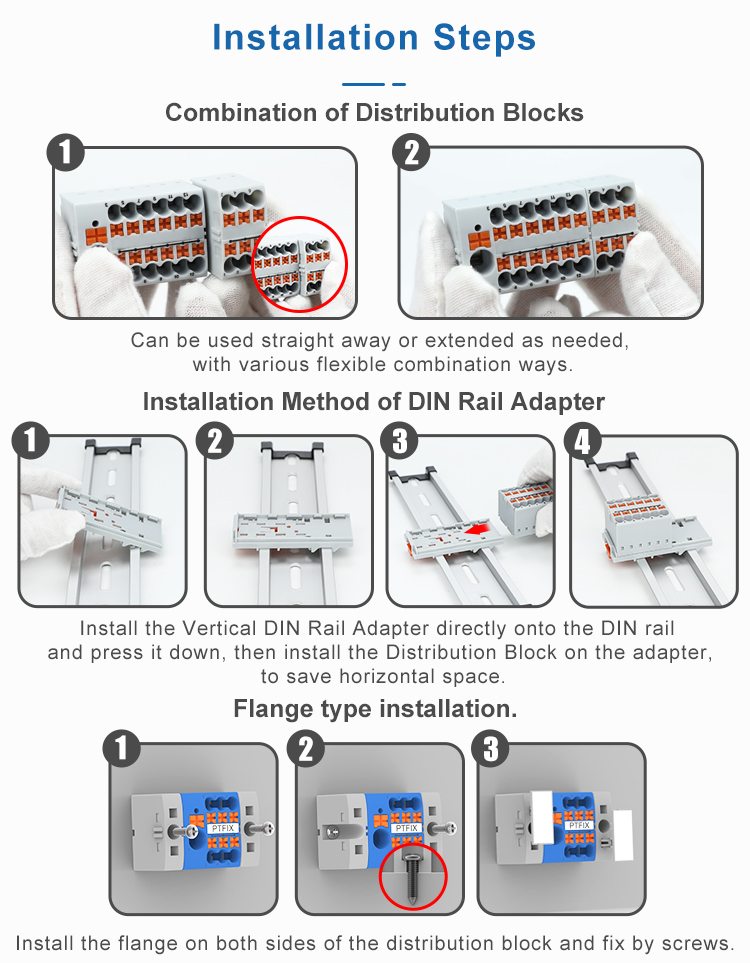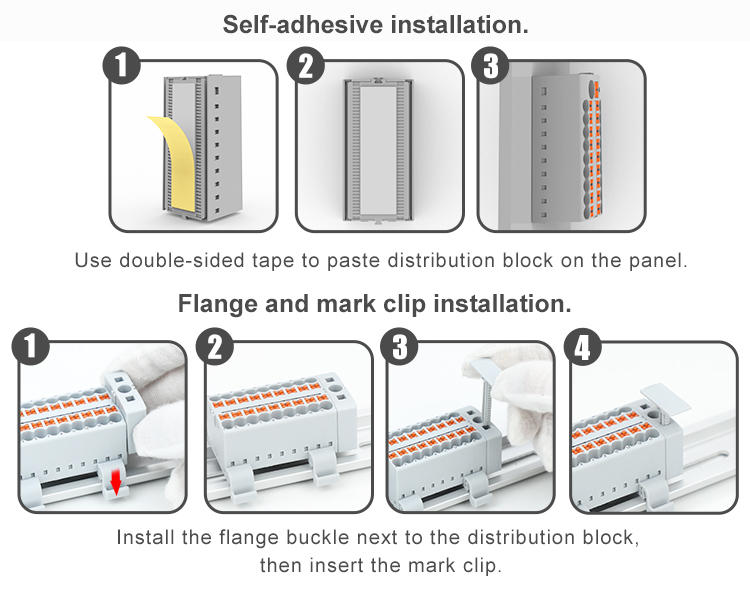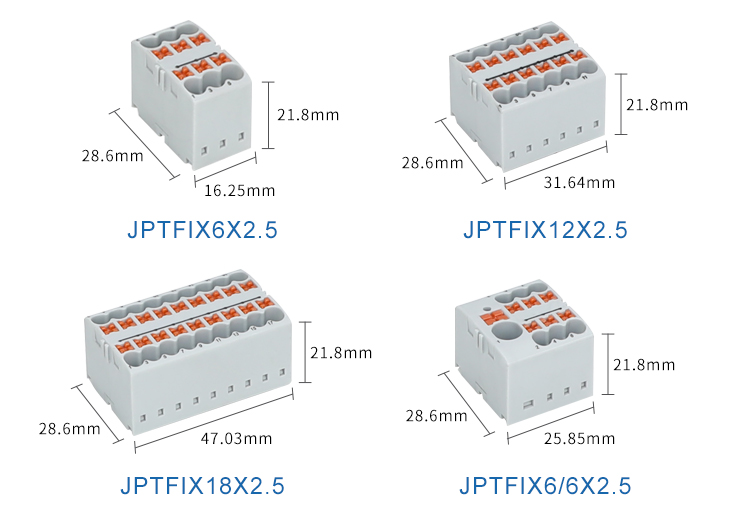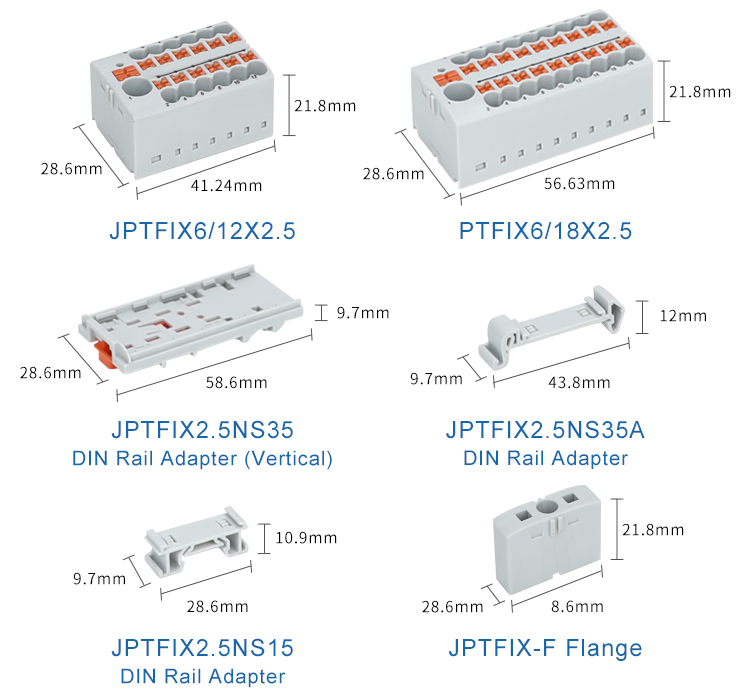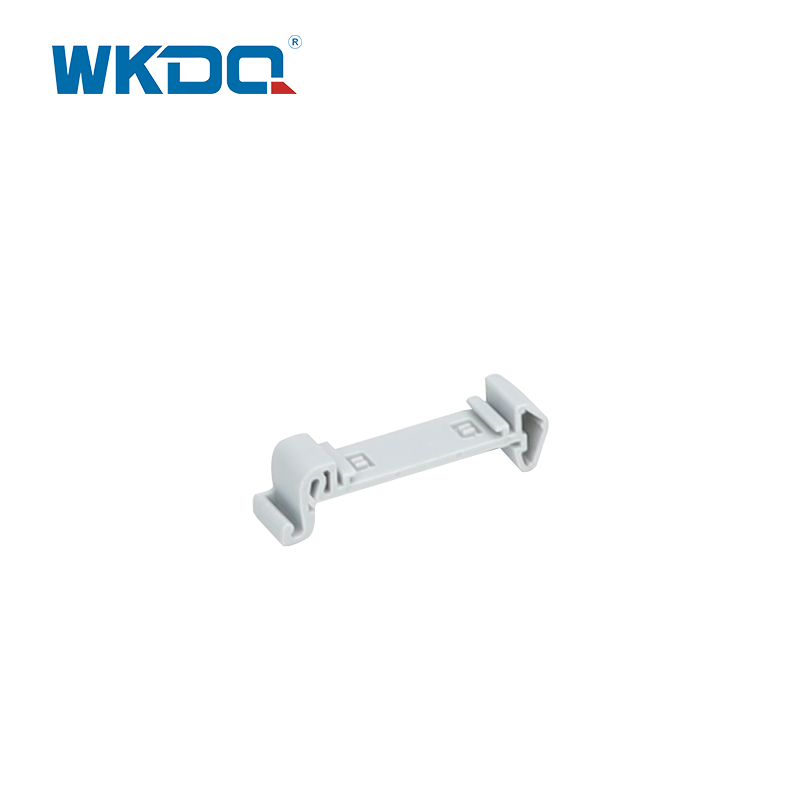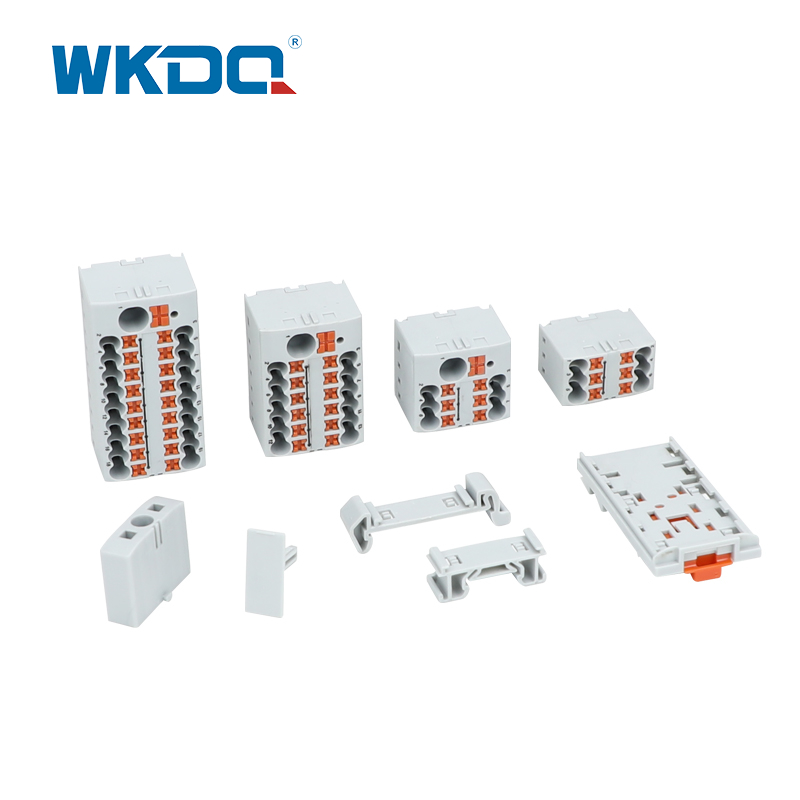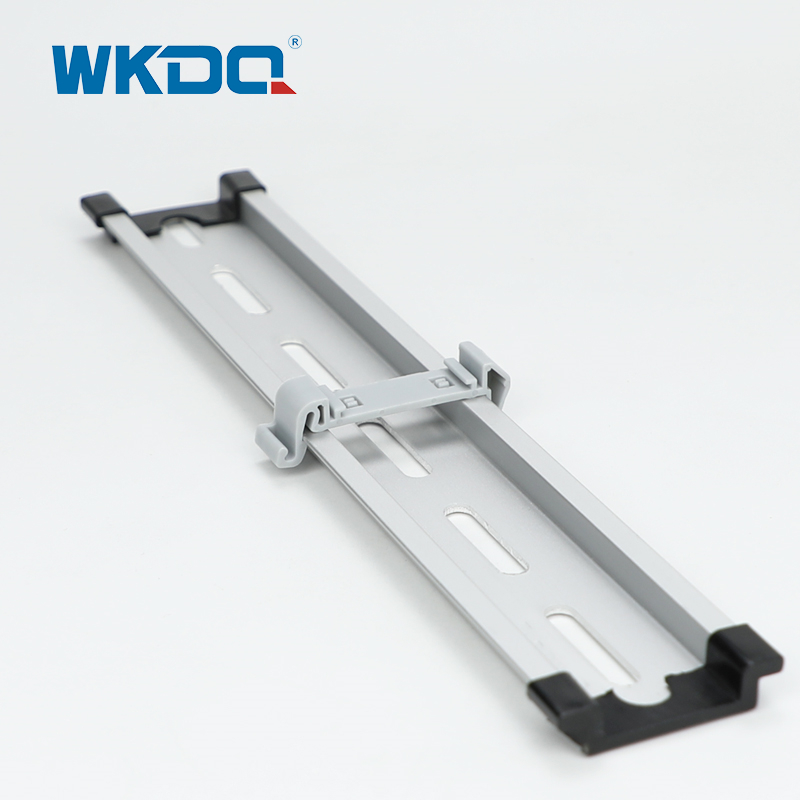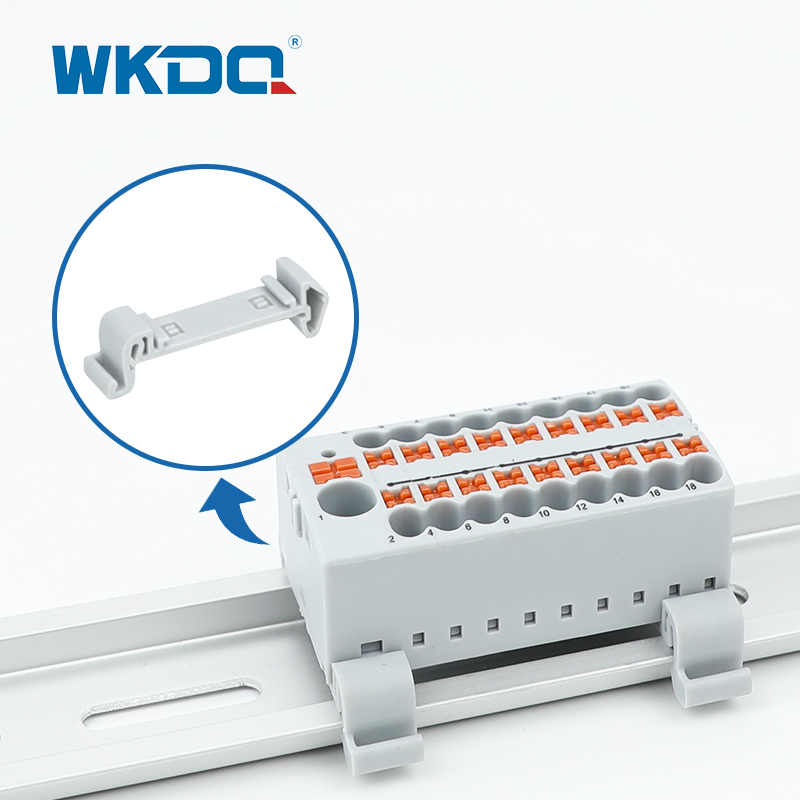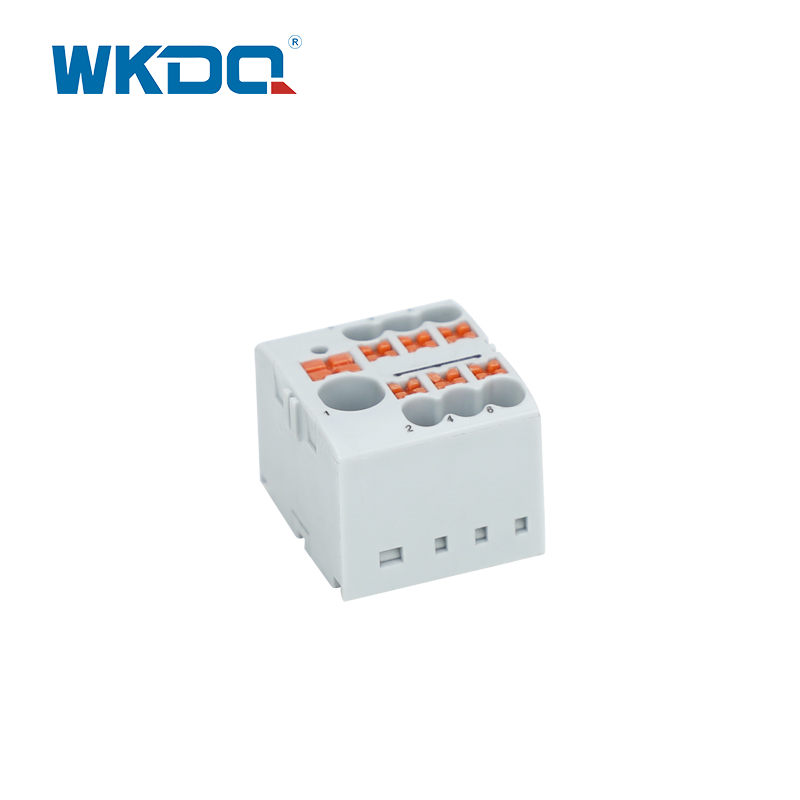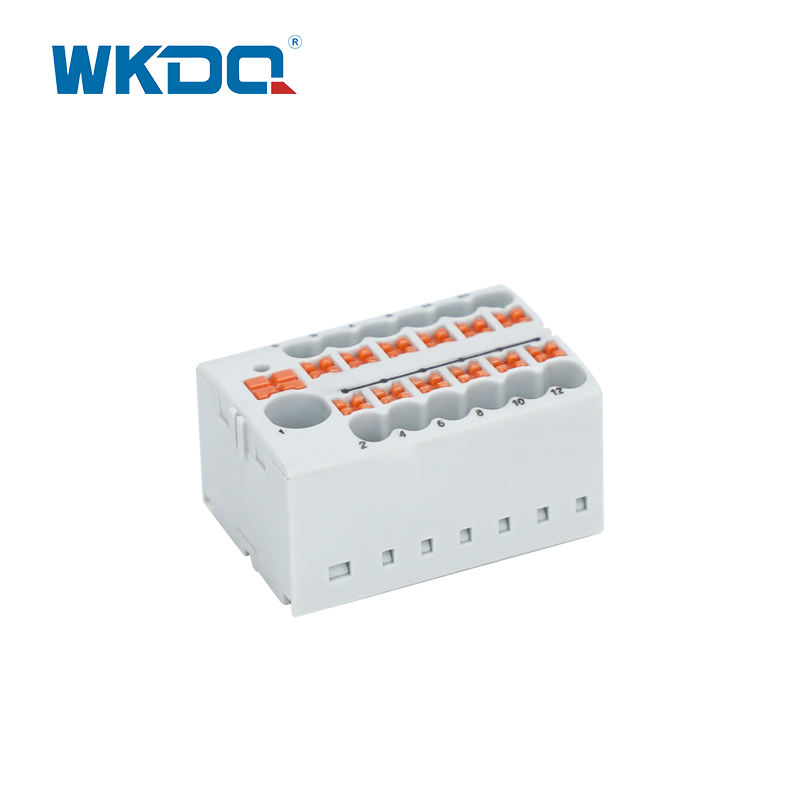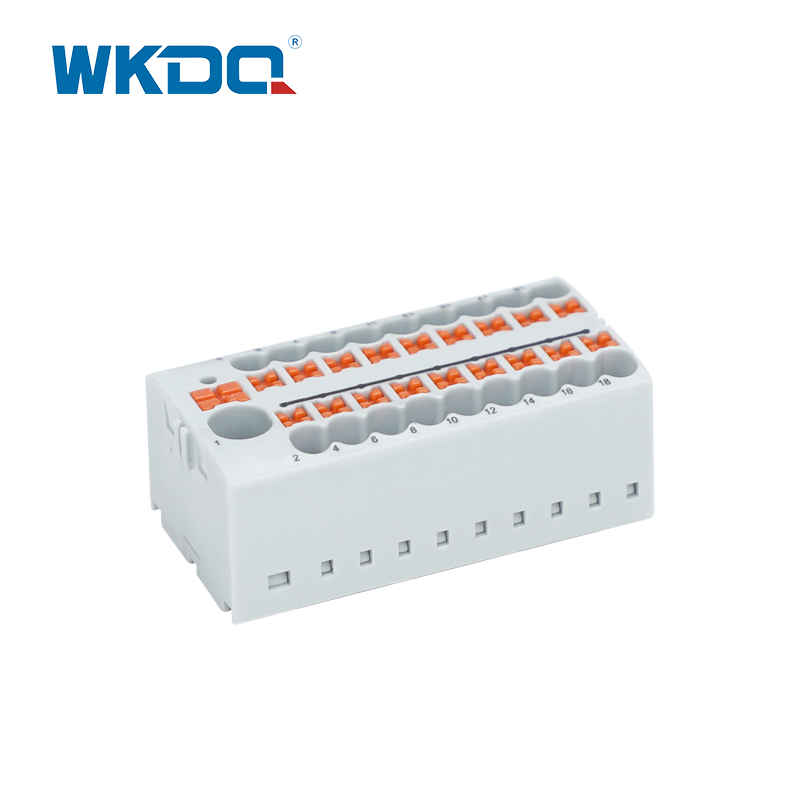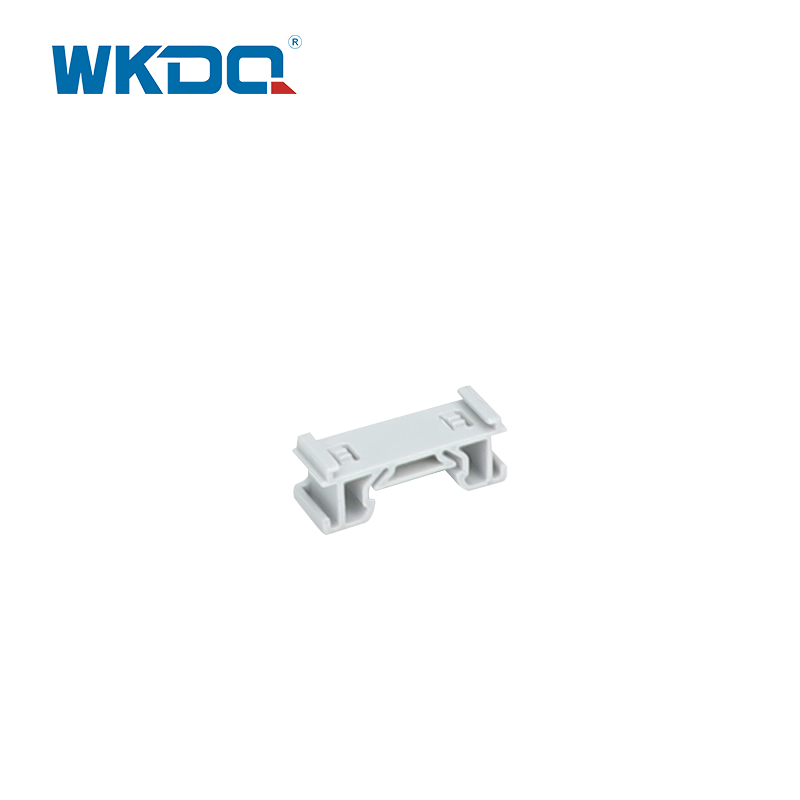- Push In Terminal Block
- Spring Terminal Block
- Spring Clamp Terminal Block
- Electrical Terminal Block
- Screw Terminal Block
- Screw Connection Terminal Block
- Hand Crimp Tools
- Din Rail 35mm
- Terminal Bus Bar
- Terminal Block Relay
- Power Distribution Terminal
- Wire End Ferrules
- Push In Wire Connectors
- Plug Socket Waterproof Connector
- Waterproof Electrical Connectors
- Electrical Cabinet Air Filter
- Distribution Block
- Aluminum High-current Terminal Blocks
DIN Rail Adapter
Place of Origin: China
Brand Name: WKDQ
Certification: CE/RoHS/CQC/ISO 9001
Model Number: JPTFIX2.5-NS35A
Packaging Details: PCS
Delivery Time: 2-7days
Send Inquiry
Powering Progress: The Role of Distribution Blocks in Electrical Systems
Distribution blocks, also known as terminal blocks or power distribution blocks, are often the unsung heroes in electrical and power distribution systems. These unassuming components are the linchpin for the efficient and secure distribution of electrical power to various devices and circuits. In this article, we will take a closer look at distribution blocks, uncovering their crucial functions, diverse types, and the wide-ranging applications that depend on their performance.
Functions of Distribution Blocks:
Distribution blocks perform a set of essential functions that serve as the foundation for the reliable and efficient distribution of electrical power:Power Distribution: At its core, distribution blocks are designed to take electrical power from a single source and distribute it to multiple outgoing circuits or devices. This ensures a systematic and controlled flow of electricity.Connections: Distribution blocks provide secure and organized connection points for wires and cables, ensuring dependable and stable electrical connections. This structured approach is vital for the seamless operation of electrical systems.Branching: These components enable the branching or splitting of power, allowing for the simultaneous supply of multiple devices or circuits. This flexibility is essential when power must be directed to various locations.Protection: Some distribution blocks are equipped with built-in overcurrent protection mechanisms. These safeguards shield connected circuits from excessive current, preventing damage and enhancing safety.Types of Distribution Blocks:
Distribution blocks come in a variety of types, each tailored to specific applications and requirements:Busbar Distribution Blocks: These components often consist of metal bars or strips that offer an exceptionally conductive path for electrical current. They excel in high-amperage applications and industrial settings, where robust power distribution is a priority.Terminal Distribution Blocks: Terminal distribution blocks feature individual terminal connectors, simplifying the connection and disconnection of wires. They are well-suited for low to medium-amperage applications, where ease of use and flexibility are critical.DIN Rail Mounted Distribution Blocks: Designed to be mounted on DIN rails, these blocks are commonly employed in industrial control panels. They provide a compact and organized means of power distribution, optimizing space utilization.Fused Distribution Blocks: In mission-critical applications, some distribution blocks incorporate integrated fuses. These fuses act as a protective barrier, preventing overcurrent from damaging connected circuits. They are especially important when equipment protection is a top priority.Key Applications:
Distribution blocks are indispensable in a wide range of industries and settings, showcasing their versatility and significance:Industrial Control Panels: Control panels rely extensively on distribution blocks to efficiently distribute power to various components, including relays, sensors, and actuators. These components are crucial to the operation of automated industrial processes.Electrical Panels: Distribution blocks are integral components of main electrical panels in residential, commercial, and industrial buildings. They ensure the orderly and secure distribution of power to different circuits and systems.Renewable Energy Systems: In the domain of renewable energy, distribution blocks facilitate the efficient channeling of power generated by sources such as solar panels and wind turbines. This power can be directed to batteries for storage or fed into the grid for broader use.Transportation: In vehicles and aircraft, distribution blocks play a pivotal role in distributing power to various electrical systems and components, ensuring the reliable operation of critical functions.Data Centers: Data centers heavily rely on distribution blocks to manage power distribution within their facilities. This ensures a consistent and uninterrupted power supply to servers, networking equipment, and other essential infrastructure.In conclusion, distribution blocks are the unsung heroes of organized and secure electrical power distribution. Their versatility and the variety of available types make them indispensable in a wide range of applications, from industrial settings to residential and commercial installations. A comprehensive understanding of the functions and types of distribution blocks is essential for designing and maintaining efficient and reliable electrical systems.
